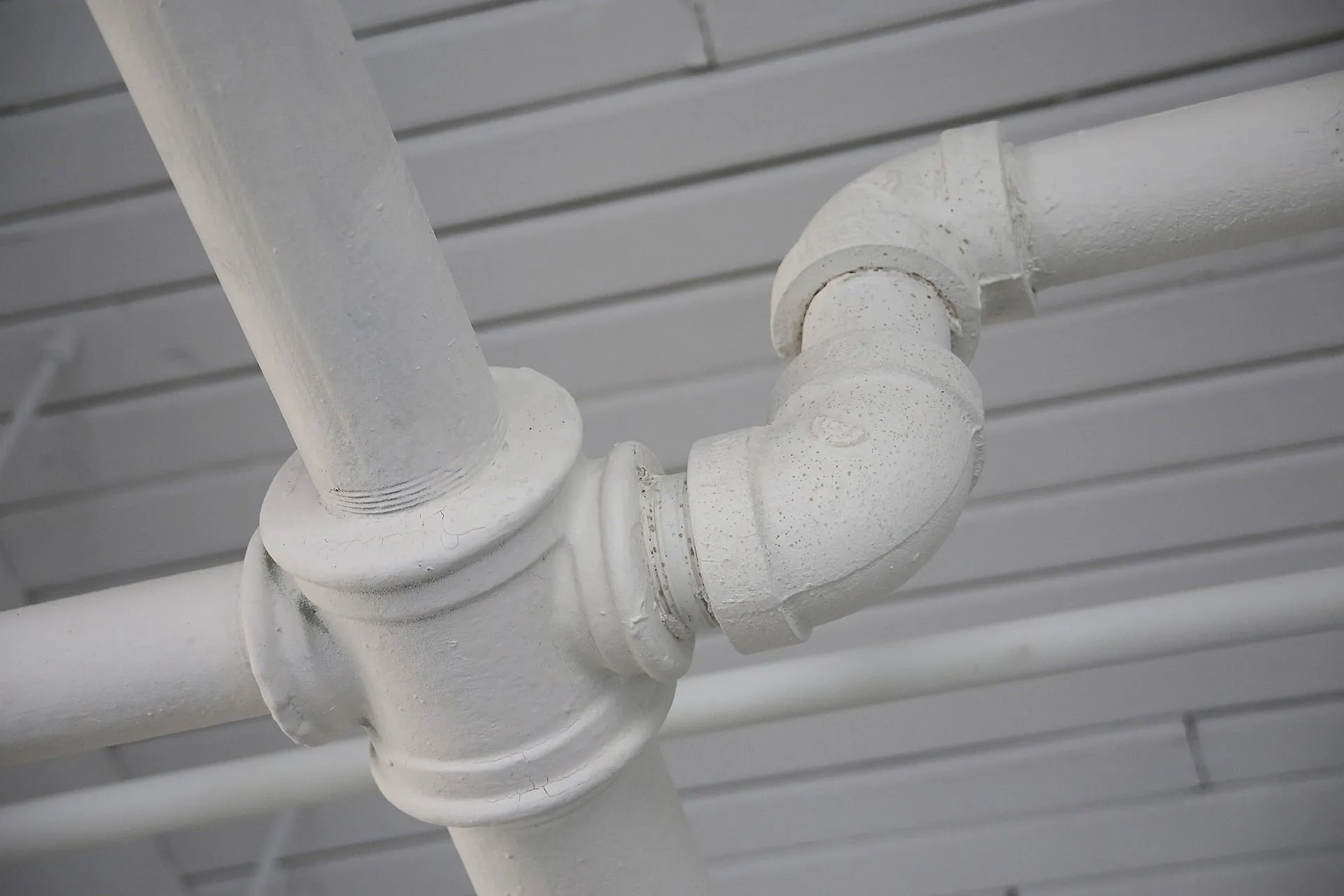Plumbing System Basics: Understanding the Components
Pipes
Pipes are the backbone of any plumbing system. They are responsible for transporting water from the main source to various fixtures in your home, such as sinks, toilets, showers, and washing machines. There are two main types of pipes: supply pipes, which bring clean water into your home, and drain pipes, which remove used water and waste. Supply pipes are typically made of copper, PEX, or PVC, while drain pipes are usually made of PVC or cast iron.
Fixtures
Fixtures are essentially devices that are connected to the plumbing system to facilitate the use of water and waste disposal. They come in various shapes and sizes, and are designed to perform specific functions within the plumbing system.
One of the most common fixtures in a plumbing system is the sink. Sinks are essential for activities such as washing dishes, hands, and food preparation. They come in different materials, shapes, and sizes to suit various needs and preferences. Another important fixture is the toilet, which is used for waste disposal. Toilets come in different styles, such as standard, elongated, and wall-mounted, and can also vary in features such as water-saving capabilities.
Other fixtures in a plumbing system include bathtubs, showers, faucets, and drains. Bathtubs and showers are used for bathing and come in various styles such as freestanding, alcove, and corner bathtub options. Faucets are used to control the flow of water in sinks, showers, and bathtubs, and come in designs such as single-handle, double-handle, and touchless options. Drains are important fixtures that help remove wastewater from sinks, showers, and bathtubs, preventing clogs and backups in the plumbing system.
Valves
Valves control the flow of water in a plumbing system.
One of the most common types of valves used in plumbing systems is the ball valve. This type of valve features a hollow, perforated ball that controls the flow of water by rotating a handle attached to the ball. Ball valves are known for their durability and reliability, making them ideal for applications where precise control of water flow is required.
Another popular type of valve is the gate valve, which features a gate or wedge-shaped disk that slides in and out of the valve to control the flow of water. Gate valves are commonly used in applications where full flow or complete shut-off is needed, such as in main water supply lines.
Water heater
The water heater heats water for domestic use, such as for showers, baths, and washing dishes.
Water heaters come in various types, including tankless, storage tank, electric, and gas-powered models. Each type has its own set of advantages and disadvantages, depending on factors such as space constraints, energy efficiency, and budget considerations. Regardless of the type of water heater you have, it is crucial to ensure it is working efficiently and safely to avoid costly repairs or potential hazards.
Drainage system
The drainage system is responsible for removing wastewater from sinks, showers, toilets, and appliances, and safely directing it away from the property. Without a properly functioning drainage system, the risk of water damage, mold growth, and foul odors increases significantly.
The drainage system in a plumbing system is typically composed of a network of pipes, fittings, traps, and vents that work together to allow for the safe and effective transport of wastewater.
Vents
Vents play a vital role in plumbing systems, helping to ensure proper drainage and prevent unpleasant odors from entering your home.
Vents in plumbing systems work by allowing air to enter the drain pipes, which in turn helps prevent negative pressure from building up. Without vents, water could be siphoned or forced out of traps, leading to slow drainage, gurgling noises, and even sewer gas entering your home.
The vent system in a plumbing system typically consists of pipes that extend from the drain pipes up through the roof of a building. These pipes are designed to allow air to flow freely, allowing for proper drainage. Additionally, vents also help to equalize air pressure in the drainage system, preventing clogs and other issues from occurring.
Fittings
Fittings are used to connect different pipes, tubes, and fixtures in a plumbing system, allowing water to flow smoothly and efficiently throughout a building. Without the right fittings, a plumbing system would not be able to function properly, leading to leaks, clogs, and other issues.
There are many different types of fittings that are used in plumbing systems, each serving a specific purpose. Some common types of fittings include couplings, elbows, tees, reducers, and adapters. Couplings are used to connect two pipes together, while elbows are used to change the direction of a pipe. Tees are used to create a branch in a pipe, while reducers are used to connect pipes of different sizes. Adapters are used to connect pipes of different materials or sizes.
Fittings come in a variety of materials, including copper, brass, PVC, and stainless steel. The type of material used for fittings will depend on the specific needs of the plumbing system, as well as factors such as cost and durability. For example, copper fittings are commonly used in residential plumbing systems due to their reliability and durability, while PVC fittings are often used in commercial and industrial plumbing systems due to their affordability and resistance to corrosion.
How to Avoid Issues in your Plumbing System
Plumbing issues can be a major headache for homeowners. From leaky pipes to clogged drains, problems with your plumbing system can disrupt your daily routine and potentially cause costly damage to your home. However, with some preventative maintenance and a little know-how, you can avoid most plumbing issues before they even start.
1. Regularly check for leaks: One of the most common plumbing issues is leaky pipes. Even a small leak can waste a lot of water and cause damage to your home. Make it a habit to regularly check for leaks under sinks, around toilets, and in your basement or crawl space. If you notice any signs of leakage, such as damp spots or mold, address the issue immediately to prevent further damage.
2. Avoid putting grease and food down the drain: Grease, oil, and food scraps can clog your pipes and cause backups in your kitchen sink. Instead of pouring these substances down the drain, dispose of them in the trash or compost bin. You can also install a strainer in your sink to catch food particles and prevent them from entering your pipes.
3. Use drain guards: Hair, soap scum, and other debris can accumulate in your shower and bathroom sinks, leading to slow drains and odors. To prevent this buildup, invest in drain guards that catch hair and other debris before it enters your pipes. Clean the drain guards regularly to keep your drains flowing smoothly.
4. Avoid flushing non-flushable items: Flushing non-flushable items, such as wipes, sanitary products, and paper towels, can cause clogs in your toilet and sewer system. Only flush toilet paper and waste down the toilet to prevent costly blockages.
5. Insulate pipes in cold weather: Freezing temperatures can cause pipes to freeze and burst, leading to costly water damage. To prevent this issue, insulate your pipes in cold weather and keep your home at a warm temperature. If you’re going on vacation during the winter, consider shutting off the main water supply and draining your pipes to prevent freezing.
6. Schedule regular maintenance: Just like your car or HVAC system, your plumbing system requires regular maintenance to ensure it’s functioning properly. Schedule annual inspections with a professional plumber to check for leaks, corrosion, and other issues that could lead to major problems down the road.
Conclusion
Understanding the basics of a plumbing system is essential in order to effectively maintain, repair, and troubleshoot issues that may arise. Familiarizing with the layout and function of these components, individuals can ensure the efficient operation of their plumbing system and prevent potential problems from occurring. Having a basic understanding of plumbing system basics can help homeowners and professionals alike maintain a safe and functional water supply and drainage system.





